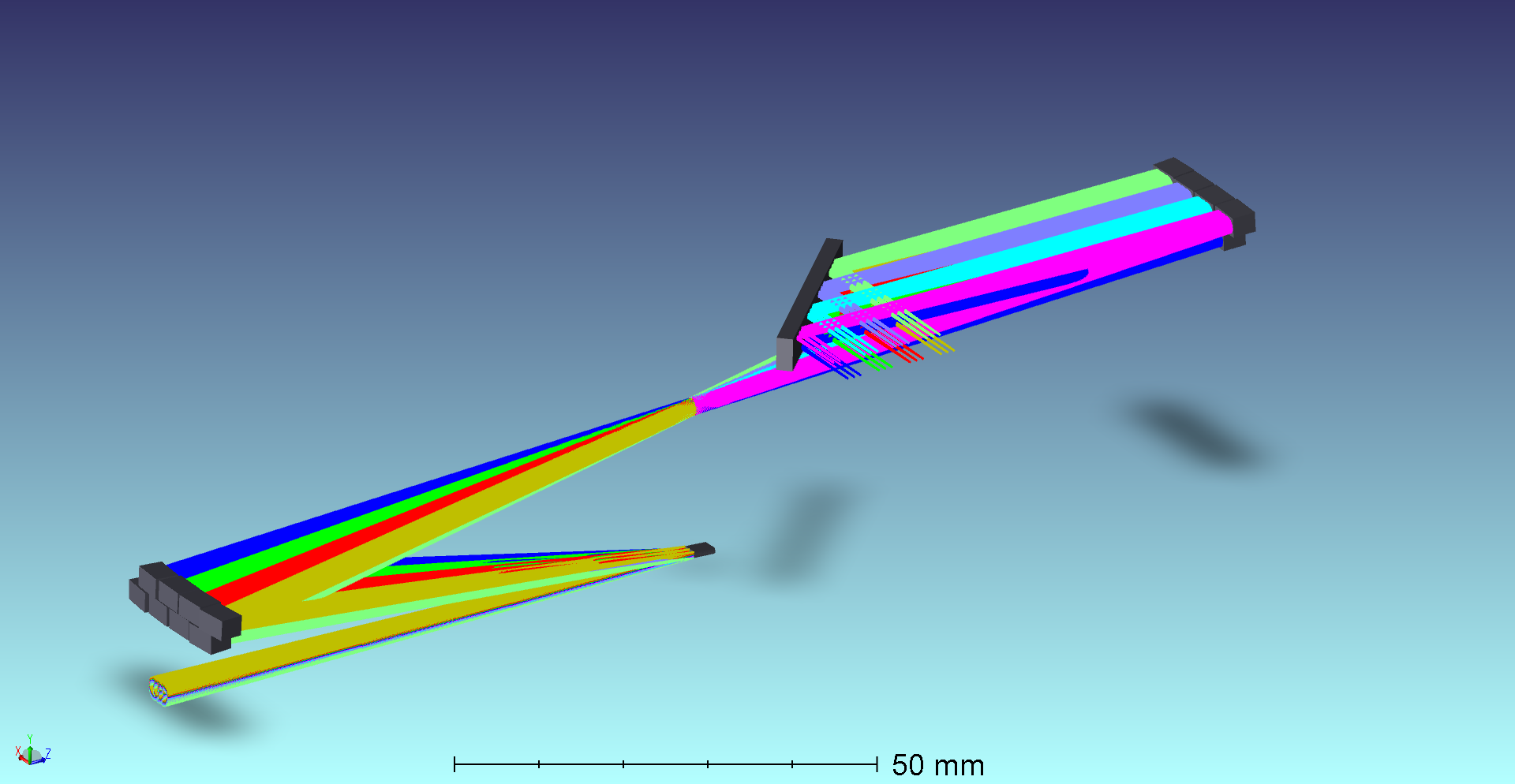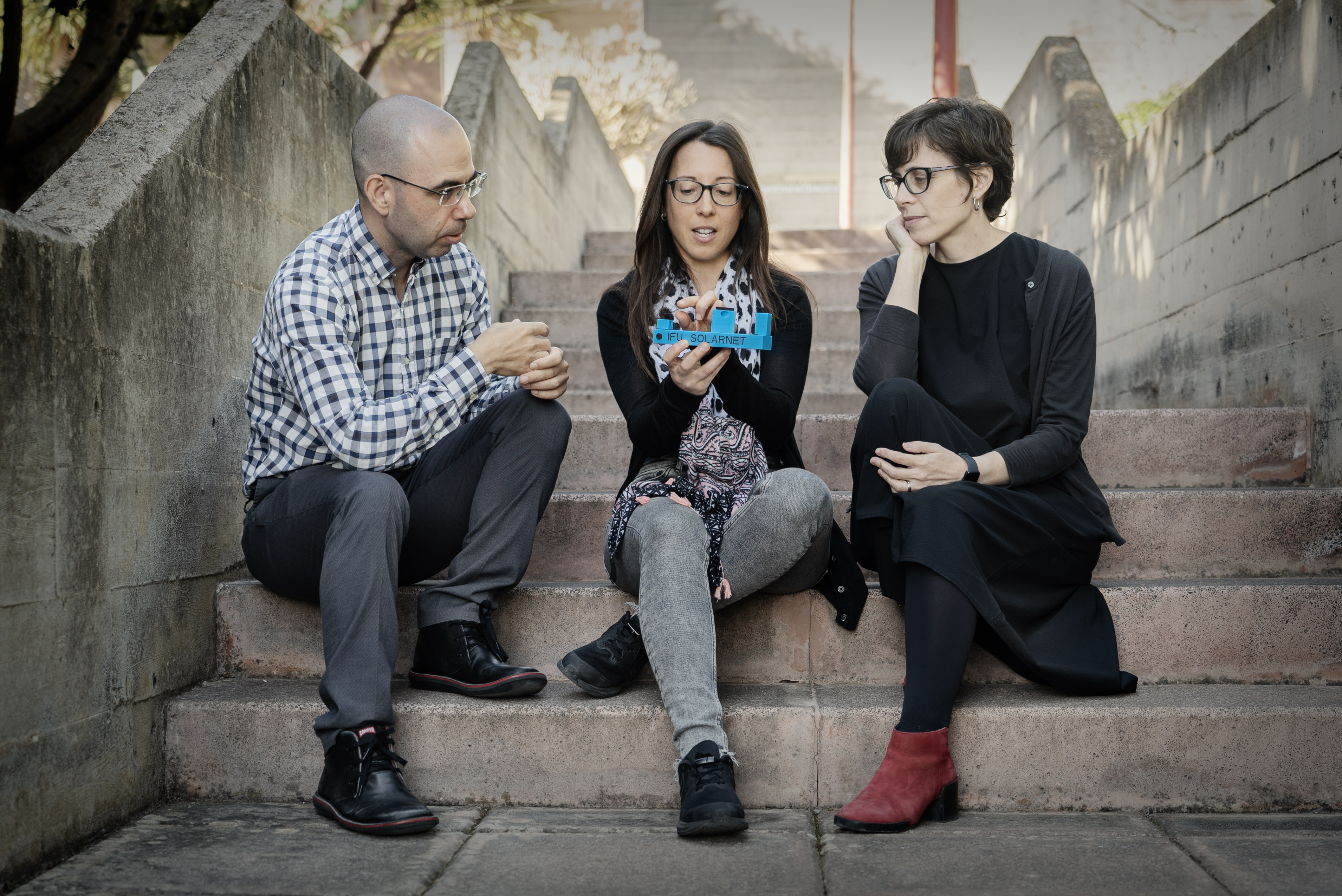Some ideas and the team behind the near-infrared IFS-S are presented.
 Ray tracing of the GREGOR Infrared Spectropolarimeter IFU.
Ray tracing of the GREGOR Infrared Spectropolarimeter IFU.
Imagine a deck of cards. Now, you are told to organise them over a table. You just have a way too big deck, with way too many cards, so you need to cover a quite larger fraction of area as compared to a single card. Not too much of a trouble. Except when building such a large table is a technological challenge, with the only available ones too small for your purpose. With a small table, you would need to keep just some of the cards, or to keep them all while cutting them so they are smaller. This is the main problem we face with the near-infrared Integral Field Spectrograph based on mirror Slicers (IFS-S): current near-infrared detectors are too small to cover large areas on the Sun at the diffraction limit of EST and with a good spectral coverage.
The present scientific requirements from the EST Science Requirements Document demand the observation of a 10” x 10” area of the Sun sampled at the diffraction limit of the telescope, and to cover a spectral range of 1 nm with a spectral resolution of 200000. Moreover, the instrument has to reach a polarimetric sensitivity of 1 polarised photon in 10000 photons with short (5 s) integration times. These requirements cannot be fulfilled all together.
First, the infrared sensor required to record the three-dimensional cube containing the spatial and spectral information does not exist at present. The largest sensor available on the market (4k x 4k) forces us to either relax the spectral resolution and spectral range, or the spatial resolution and area coverage, or both. Moreover, we need to collect as many photons as possible to reach the desired polarimetric sensitivity. This can be achieved with such a large photon collector as EST, but with a spatial resolution larger than the diffraction limit.
 Examining the GRIS image slicer prototype constructed within the framework of the SOLARNET project.
Examining the GRIS image slicer prototype constructed within the framework of the SOLARNET project.
Within our group, we are studying a conceptual design of the IFS-S to image a large area on the Sun (close to 10” x 10”), to record a wide spectral range (about 3 nm, to perform multiline analyses), and to prioritise the polarimetric sensitivity (1/10 000) over the spatial sampling of the images. The exact numbers are to be decided in consensus with the Science Advisory Group at the beginning of 2024.
As of today, the group of the IFS-S is composed by project scientist Carlos Quintero Noda, optical engineer Silvia Regalado Olivares, and principal investigator María Jesús Martínez González. We are also involved in the development and upgrade of the IFS-S for the GRIS instrument at the GREGOR telescope (see accompanying figure). These technological developments at GRIS are crucial studies for the design of the IFS-S for EST.
